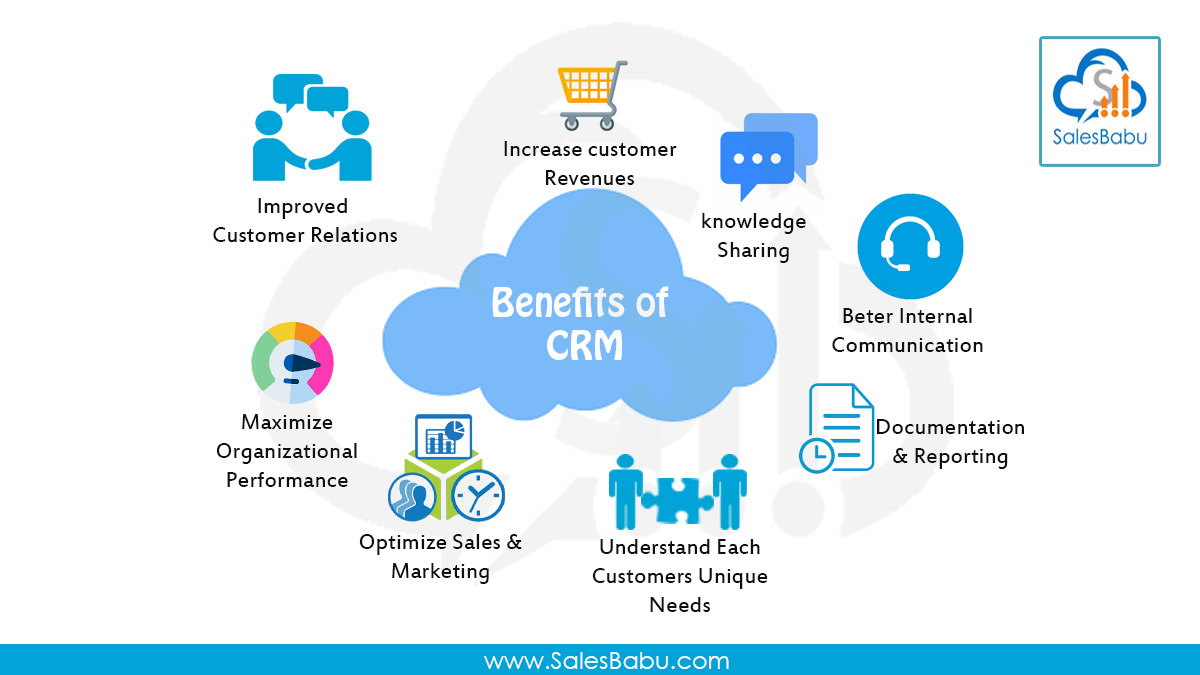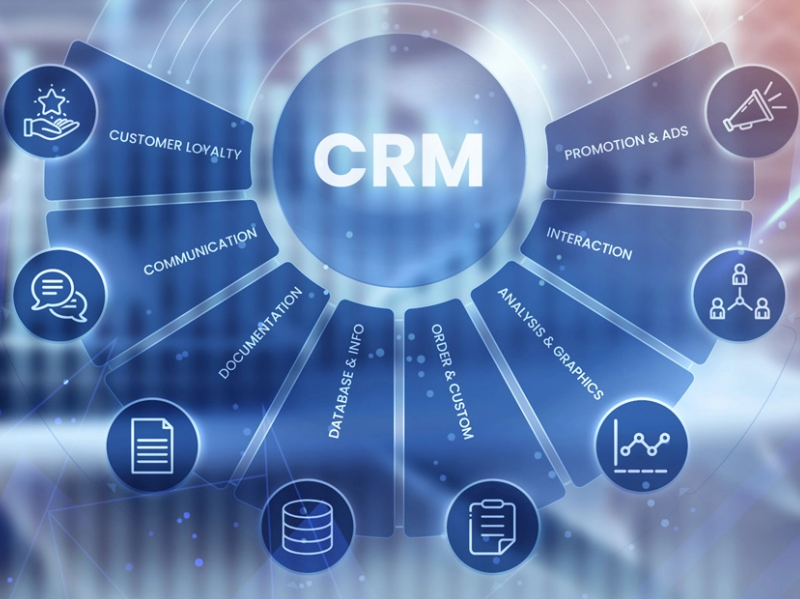Customer Relationship Management (CRM) systems have revolutionized the way businesses interact with their customers, offering a comprehensive approach to manage and analyze customer interactions and data throughout the customer lifecycle.
By centralizing customer information and automating routine tasks, CRM solutions not only streamline operations but also significantly reduce operational costs. Moreover, these systems enhance customer satisfaction and loyalty, driving higher conversion rates and repeat business.
This article explores how implementing a CRM can lead to cost reductions and profit maximization, highlighting key features and best practices for successful deployment.
How CRM Reduces Costs and Maximizes Profits
Customer Relationship Management (CRM) systems are designed to streamline business processes, enhance customer interactions, and drive profitability. By centralizing customer data, automating routine tasks, and providing actionable insights, CRM solutions significantly reduce operational costs while maximizing profits.
This article will delve into the specific ways CRM helps in cost reduction and profit maximization, highlighting the key benefits and practical applications.
Streamlining Operations and Reducing Overhead Costs
One of the primary ways CRM systems reduce costs is by streamlining operations. By automating routine tasks such as data entry, customer segmentation, and campaign management, businesses can minimize the need for manual labor and reduce the potential for errors.
This automation not only saves time but also reduces the overhead costs associated with hiring and training additional staff.
Additionally, CRM systems integrate with other business tools, such as ERP and marketing automation platforms, to create a seamless workflow that further enhances efficiency. As a result, businesses can allocate resources more effectively, leading to cost savings and improved profitability.
Improving Customer Retention and Lifetime Value
Customer retention is a critical factor in maximizing profits, and CRM systems play a pivotal role in this area. By providing a 360-degree view of customer interactions, CRM solutions enable businesses to better understand and anticipate customer needs.
Personalized marketing and timely follow-ups can significantly enhance customer satisfaction and loyalty. Higher customer retention rates translate to increased customer lifetime value (CLV), as repeat customers are generally more cost-effective to serve and tend to spend more over time.
CRM systems also help in identifying and nurturing high-value customers, ensuring that the most profitable segments receive the attention they deserve.
Enhancing Sales Efficiency and Effectiveness
CRM systems are instrumental in improving sales efficiency and effectiveness. By centralizing customer data and providing a comprehensive view of the sales pipeline, CRM solutions help sales teams prioritize their efforts and focus on the most promising leads.
Automated lead scoring and predictive analytics can identify high-potential opportunities, reducing the time and resources spent on less viable prospects.
Additionally, CRM systems enable better collaboration among team members, ensuring that everyone is aligned and working towards common goals. This improved alignment and efficiency lead to higher conversion rates, shorter sales cycles, and ultimately, increased revenue and profit margins.
| Benefit | Description |
|---|---|
| Cost Reduction | Automation of routine tasks, integration with other tools, and streamlined operations reduce overhead and operational costs. |
| Customer Retention | Personalized interactions and customer insights lead to higher satisfaction and loyalty, increasing customer lifetime value. |
| Sales Efficiency | Centralized data, lead scoring, and collaboration tools enhance sales performance, leading to higher conversion rates and revenue. |
How does the CRM system ensure profitability?

A Customer Relationship Management (CRM) system ensures profitability through various strategic and operational mechanisms.
By integrating comprehensive data management, advanced analytics, and streamlined processes, a CRM system helps businesses enhance customer satisfaction, optimize sales cycles, and improve overall operational efficiency. Here’s how a CRM system ensures profitability:
Enhanced Customer Insights and Personalization
A CRM system collects and centralizes customer data from multiple touchpoints, providing a comprehensive view of each customer. This data includes purchase history, communication records, and behavioral patterns. By analyzing this information, businesses can gain deep insights into customer preferences and behaviors.
These insights enable more targeted marketing efforts and personalized communication, leading to higher customer engagement and loyalty. For example:
- Segmentation of customers based on demographics, purchase history, and behavior allows for tailored marketing campaigns.
- Personalized product recommendations increase the likelihood of upselling and cross-selling.
- Proactive customer service interventions can address issues before they escalate, reducing churn.
Optimized Sales Processes
CRM systems streamline sales processes by providing sales teams with real-time access to customer information and sales performance data. This enables more efficient lead management, opportunity tracking, and sales forecasting.
By automating routine tasks and providing actionable insights, CRM systems help sales teams focus on high-value activities that drive revenue growth. For example:
- Automated lead scoring helps identify the most promising leads, allowing sales teams to prioritize their efforts.
- Workflow automation for follow-ups and reminders ensures that no opportunities are overlooked.
- Advanced reporting and analytics tools provide insights into sales performance, enabling data-driven decision-making.
Improved Operational Efficiency
CRM systems integrate various business functions, such as sales, marketing, and customer service, into a unified platform.
This integration reduces data silos and improves collaboration across departments. By automating manual processes and providing real-time data, CRM systems help businesses operate more efficiently, reducing costs and improving service quality. For example:
- Automated data entry and synchronization reduce the risk of errors and free up staff time for more strategic tasks.
- Centralized data access ensures that all team members have the most up-to-date information, improving decision-making.
- Integrated customer service tools, such as ticketing systems and knowledge bases, enhance the customer experience by providing timely and accurate support.
How do CRM systems help firms gain and maintain a competitive advantage?
CRM systems, or Customer Relationship Management systems, play a crucial role in helping firms gain and maintain a competitive advantage by streamlining customer interactions, enhancing data management, and fostering better customer experiences.
These systems centralize customer data, automate processes, and provide valuable insights that drive strategic decisions and operational efficiency. Here are some detailed ways in which CRM systems contribute to a firm’s competitive edge:
Enhancing Customer Insights and Personalization
CRM systems collect and integrate data from various touchpoints, such as sales, marketing, and customer service, to create a comprehensive view of each customer. This aggregated data allows firms to understand customer preferences, behaviors, and needs more accurately.
By leveraging this information, companies can:
- Personalize marketing and sales efforts to target specific customer segments with tailored offers and communications.
- Improve product recommendations based on past purchases and browsing history.
- Anticipate customer needs and proactively address potential issues before they become problems.
Improving Operational Efficiency and Productivity
CRM systems automate routine tasks, such as data entry, follow-ups, and report generation, which frees up employees’ time to focus on more strategic activities. This automation leads to:
- Reduced manual errors and increased accuracy in data management.
- Streamlined workflows that enhance collaboration and communication across departments.
- Quicker response times to customer inquiries and requests, leading to higher customer satisfaction.
Driving Data-Driven Decision Making
CRM systems provide robust analytics and reporting tools that help firms make informed decisions based on real-time data. These insights can be used to:
- Identify trends and patterns in customer behavior to inform product development and marketing strategies.
- Measure the effectiveness of marketing campaigns and adjust them accordingly to optimize ROI.
- Track key performance indicators (KPIs) to monitor the health of customer relationships and identify areas for improvement.
How does CRM increase revenue?

A Customer Relationship Management (CRM) system can significantly boost revenue by streamlining sales processes, enhancing customer service, and providing valuable insights through data analysis.
By centralizing customer data, CRMs enable businesses to understand customer behavior and preferences, leading to more targeted marketing campaigns and personalized sales approaches. This, in turn, increases the likelihood of converting leads into customers and retaining existing ones.
Additionally, CRMs automate routine tasks, allowing sales teams to focus on high-value activities, such as building relationships and closing deals. The improved efficiency and effectiveness of sales and marketing efforts directly contribute to higher revenue generation.
Improving Sales Efficiency and Effectiveness
A CRM system enhances sales efficiency and effectiveness by providing sales teams with real-time access to customer data and insights. This allows sales representatives to:
- Identify and prioritize high-potential leads based on detailed customer profiles and historical interactions.
- Track sales activities and pipeline progress, ensuring that no opportunities are overlooked.
- Collaborate more effectively with other team members and departments, leading to faster and more coordinated sales cycles.
Enhancing Customer Retention and Loyalty
By improving customer service and engagement, CRMs can significantly enhance customer retention and loyalty, both of which are crucial for long-term revenue growth. Key benefits include:
- Personalizing customer interactions with tailored offers and recommendations based on purchase history and preferences.
- Proactively addressing customer concerns and issues through timely and effective support.
- Building deeper relationships through consistent and meaningful communication, which fosters trust and loyalty.
Optimizing Marketing Campaigns and Strategies
CRMs provide valuable insights into customer behavior and market trends, enabling businesses to optimize their marketing campaigns and strategies.
This leads to more effective and efficient marketing efforts, which can drive higher conversion rates and revenue. Key strategies include:
- Segmenting the customer base to create targeted marketing campaigns that resonate with specific groups.
- Measuring the effectiveness of marketing initiatives through detailed analytics and adjusting strategies accordingly.
- Integrating CRM data with other marketing tools and channels to create a seamless and cohesive customer experience.
How does CRM improve productivity?
A Customer Relationship Management (CRM) system is a powerful tool that enhances productivity in various ways, streamlining processes, improving communication, and providing valuable insights.
By centralizing customer data, CRM allows businesses to manage interactions more efficiently, leading to better decision-making and customer satisfaction. Here’s a detailed look at how CRM can improve productivity:
Centralized Customer Data for Enhanced Efficiency
One of the primary ways CRM improves productivity is by centralizing customer data. This consolidation ensures that all relevant information about a customer, including their history, preferences, and communication records, is stored in a single, accessible location. This has several benefits:
- Employees can quickly access and update customer information without having to search through multiple systems or documents.
- Streamlined access to data reduces the time spent on administrative tasks, allowing team members to focus more on value-adding activities like sales and customer service.
- Consistent and accurate data helps in reducing errors, leading to more reliable and efficient processes.
Automated Workflows and Task Management
CRM systems often come with automated workflows and task management features that significantly boost productivity. These tools can handle repetitive tasks, freeing up employees to focus on more strategic work. Key benefits include:
- Automated email responses and follow-ups can be set up for routine inquiries, ensuring timely communication with customers.
- Workflow automation can trigger actions based on specific events, such as sending a thank-you email after a purchase or scheduling a follow-up call after a meeting.
- Task management tools help in organizing and prioritizing tasks, ensuring that deadlines are met and that no important activities are overlooked.
Real-Time Analytics for Informed Decision-Making
CRM systems provide real-time analytics and reporting capabilities that empower businesses to make data-driven decisions. These insights can lead to more effective strategies and improved productivity. Key points include:
- Real-time analytics offer a current view of sales performance, customer behavior, and market trends, allowing for quick adjustments to strategies.
- Customizable dashboards provide at-a-glance visibility into key metrics, making it easier for managers to monitor team performance and identify areas for improvement.
- Data-driven insights can help in identifying cross-selling and upselling opportunities, leading to increased revenue and better customer satisfaction.
Frequently Asked Questions
How does CRM reduce operational costs for businesses?
CRM systems streamline processes, automate repetitive tasks, and improve data management, which reduces the need for additional staffing and minimizes errors. By centralizing customer information, businesses can operate more efficiently, leading to lower operational costs and increased productivity.
What are the key features of CRM that maximize profits?
Key features include advanced analytics, personalized customer interactions, and automated marketing campaigns. These features help businesses identify lucrative opportunities, optimize sales strategies, and enhance customer satisfaction, all of which contribute to higher profits and better customer retention.
Can CRM improve customer loyalty and thereby increase revenue?
Yes, CRM systems enhance customer loyalty by providing personalized experiences and consistent communication. By understanding customer preferences and behaviors, businesses can offer targeted promotions and exceptional service, leading to higher customer satisfaction, increased repeat business, and ultimately, higher revenue.
How does CRM help in better resource allocation?
CRM provides insights into customer behavior and sales trends, allowing businesses to allocate resources more effectively. By identifying high-performing areas and customer segments, businesses can focus their efforts on the most profitable activities, optimizing resource use and maximizing return on investment.


